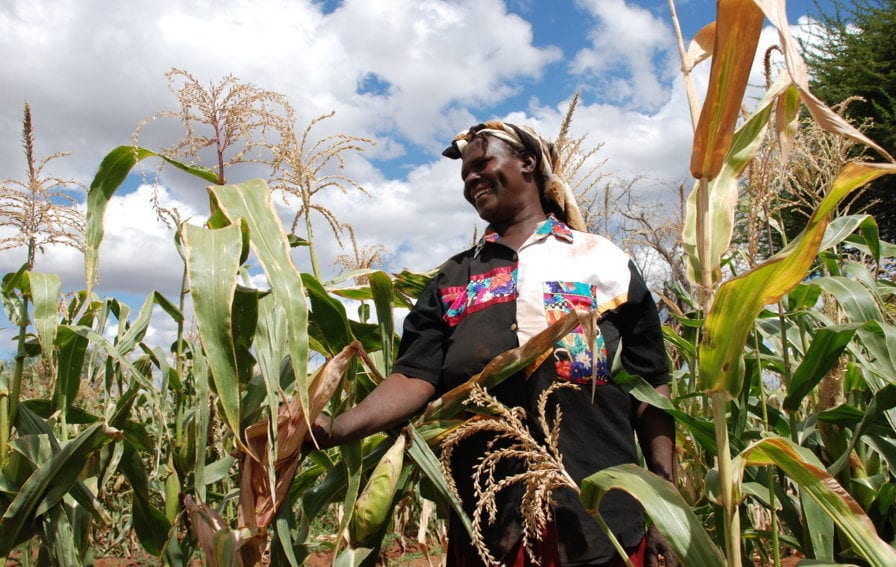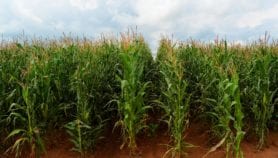By: Gilbert Nakweya
Send to a friend
The details you provide on this page will not be used to send unsolicited email, and will not be sold to a 3rd party. See privacy policy.
[NAIROBI] Efforts aimed at building scientific and technological innovations to help smallholder farmers adapt to climate change-related impacts and improve productivity across Africa have received a major funding boost.
The Consultative Group on International Agricultural Research (CGIAR) announced last month (December 17) that their research funding increased to US$1 billion in 2013 from US$500 million in 2008.
In 2013, the Australian and Mexican governments joined CGIAR’s major donors, including Bill and Melinda Gates Foundation, the European Commission, the World Bank and governments of Canada, the Netherlands, Norway, Sweden, United Kingdom and the United State.
According to Jonathan Wadsworth, executive secretary of the CGIAR Fund Council, more than half of the funds will go towards CGIAR's work in Africa.
“This new funding will help boost research to generate climate-smart solutions that deliver a triple win for African farmers: increased agricultural productivity, improved adaptation to a changing climate through resilience to drought, flooding and heat, and farming systems with reduced greenhouse gas emissions.”
Jonathan Wadsworth, CGIAR Fund Council
The money will be used to create scientific and technological advances to provide 12 million African households with sustainable irrigation and help 150 million people in Asia increase rice production to get them out of poverty, according to a statement from CGIAR.
The innovations could provide highly nutritious food crops to 50 million poor people across the world, the statement adds.
Wadsworth says that previous funding for agricultural research has not kept pace with the need for new innovations in areas such as increasing nutritional content of food.
“This new funding will help boost research to generate climate-smart solutions that deliver a triple win for African farmers: increased agricultural productivity, improved adaptation to a changing climate through resilience to drought, flooding and heat, and farming systems with reduced greenhouse gas emissions,” notes Wadsworth.
Varieties of nutritious crops developed with CGIAR support are already making impact in Africa.
In Machakos, Kenya, the CGIAR’s International Maize and Wheat Improvement Center (CIMMYT) is working with farmers to improve maize varieties.
James Mativo, a smallholder farmer in the area, says that they have increased food production by using high-yielding, drought- and disease-tolerant seed variety from CIMMYT called KDV4 maize.
“KDV4 variety [needs] little rainfall and produces high quality yields,” says Mativo. “I used to harvest 10 bags of 100 kilogrammes a hectare but now I am getting 40 bags a hectare.”
Mativo, however, calls for investments in storage facilities to help address post-harvest weevil infestations.
Florence Nduku, also from Machakos, says she is now motivated to plant CIMMYT maize and wheat varieties because adopting them helps her pay school fees for her children. Income from the new varieties has also helped her build a modern permanent house.
Erick Boy, head of nutrition at HarvestPlus, an initiative that promotes production of nutrient-rich crops, says that CGIAR innovations, especially in climbing beans in Rwanda, are improving nutritional situation in Africa and thus they want to reach more farmers for greater impact.
Increased yields of climbing beans have helped reduce poverty in Rwanda, adds Robin Buruchara, African regional head for CGIAR’s International Center for Tropical Agriculture.
Tsedeke Abate, head of CIMMYT’s Drought Tolerant Maize for Africa project, says that stakeholders such as scientists, donors, the private sector and African governments should collaborate to help realise the continent’s full agricultural potential.
This article has been produced by SciDev.Net's Sub-Saharan Africa desk.














